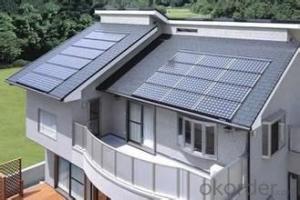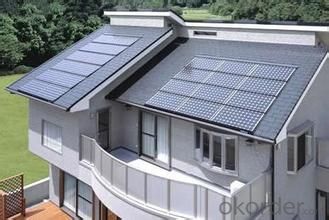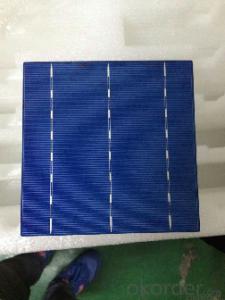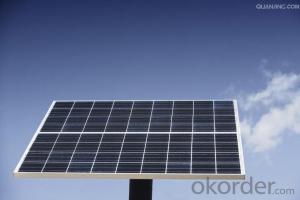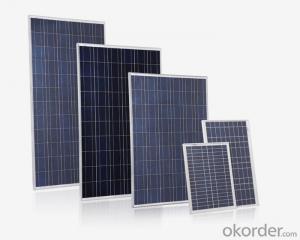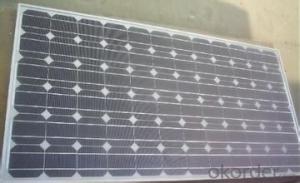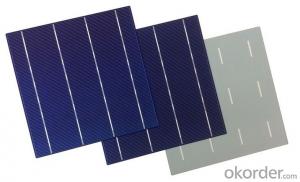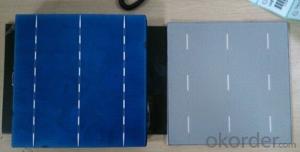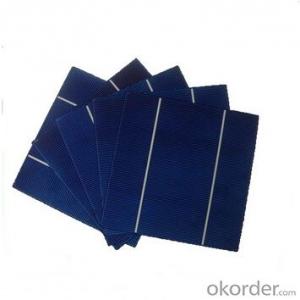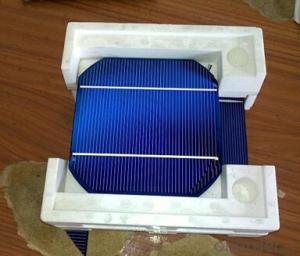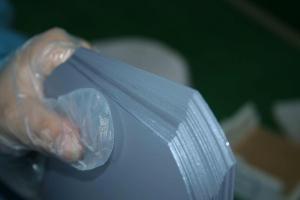Monocrystalline Silicon Solar Cell 156mm 2024
- Loading Port:
- China Main Port
- Payment Terms:
- TT OR LC
- Min Order Qty:
- -
- Supply Capability:
- -
OKorder Service Pledge
OKorder Financial Service
You Might Also Like
Quick Details
| Model Number: | |||||
| Material: | Size: | Number of Cells: | |||
| Max. Power: | Weight: | Rating Power (Pm): | |||
| Tolerance: | Rated Voltage (Vm): | Rated Current (Im): | |||
| Open Circuit Voltage (Voc): | Short Circuit Voltage (Isc): | Size of cells: | |||
| Website: |
Packaging & Delivery
| Packaging Detail: | Standard export packing |
| Delivery Detail: | 20days |
Specifications
1)High quality monocrystalline silicon solar cell
2) Competitive prices
3) TUV, UL, IEC61215,IEC61730, CE
monocrystalline silicon solar cell
1,Solar Module is widely used for
1)Microwave/radio repeater stations,
2)Electrification of villages in emote areas,
3)Medical facilities in rural areas,
4)Power source for summer vacation homes,
5)Emergency communication systems
6)Water quality and environmental data monitoring systems
7)Navigation lighthouses, and ocean buoys
8)Pumping systems for irrigation, rural water supplies and livestock watering
9)Aviation obstruction lights
10)Cathodic protection systems
11)Desalination systems
12)Recreational vehicles
13)Railroad signals
14)Sailboat charging systems
2) Product Description
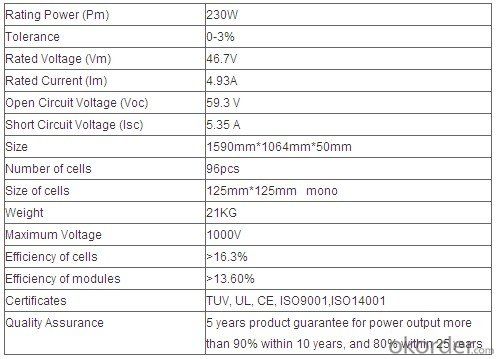
- Q: How do solar cells perform in areas with high levels of humidity?
- Solar cells generally perform slightly less efficiently in areas with high levels of humidity. This is because the moisture in the air can scatter and absorb some of the sunlight before it reaches the solar cell, reducing its overall power output. However, modern solar cell technologies have been developed to minimize this effect and maintain a satisfactory performance even in humid conditions.
- Q: What is the impact of shadows on solar cell performance?
- Shadows have a negative impact on solar cell performance as they decrease the amount of sunlight reaching the solar panel, therefore reducing the electricity generation. Shadows can create "hot spots" on the cells, leading to higher temperatures and potential damage. It is essential to ensure that solar panels are installed in areas free from shadows to maximize their efficiency and overall performance.
- Q: Can solar cells be used for off-grid power supply?
- Yes, solar cells can be used for off-grid power supply. Solar cells, also known as photovoltaic cells, convert sunlight directly into electricity. This makes them an excellent choice for powering off-grid locations where access to traditional power sources may be limited or unavailable. Solar panels can be installed in remote areas to generate electricity, providing a sustainable and renewable energy solution for off-grid power supply.
- Q: Can solar cells be used in space satellites?
- Yes, solar cells can be used in space satellites. In fact, solar cells are commonly used in satellites to generate electricity from the sunlight in space. These cells convert sunlight into electrical energy, which is then used to power various systems and instruments onboard the satellite.
- Q: What is the role of anti-islanding devices in solar cell systems?
- The role of anti-islanding devices in solar cell systems is to ensure the safety of utility workers by preventing the solar system from continuing to generate and supply electricity to the grid during a power outage. These devices detect when the grid connection is lost and immediately disconnect the solar system, preventing any potential harm or damage that could occur if electricity was still being fed into the grid.
- Q: Can solar cells be used to power remote weather stations?
- Yes, solar cells can be used to power remote weather stations. Solar cells convert sunlight into electricity, providing a reliable and sustainable power source for remote locations. This eliminates the need for traditional power grid connections and reduces operating costs. Additionally, solar cells can be easily installed and maintained in remote areas, making them an ideal solution for powering weather stations in such locations.
- Q: Can solar cells be used in residential homes?
- Yes, solar cells can definitely be used in residential homes. In fact, they are increasingly being adopted as a sustainable and cost-effective energy solution for households. Solar cells convert sunlight into electricity, allowing homeowners to generate their own clean and renewable energy. This not only reduces reliance on fossil fuels but also helps save money on electricity bills. With advancements in technology and decreasing costs, solar panels have become more accessible and efficient, making them a popular choice for residential homes worldwide.
- Q: What is the role of maximum power point tracking in solar cell systems?
- The role of maximum power point tracking (MPPT) in solar cell systems is to optimize the energy output of the solar cells. It does this by continuously adjusting the operating voltage and current of the solar cells to find the maximum power point, where the solar cells are operating at their highest efficiency. MPPT ensures that the solar cells are always delivering the maximum amount of power to the system, resulting in improved energy generation and increased overall system performance.
- Q: What is the impact of solar cells on reducing energy inequality?
- Solar cells have a significant impact on reducing energy inequality by providing access to affordable and sustainable energy sources. By harnessing the power of the sun, solar cells can be deployed in remote and underserved areas, where traditional electricity grids are absent or unreliable. This empowers communities, particularly in developing regions, to generate their own clean energy, reducing dependence on fossil fuels and promoting energy self-sufficiency. Ultimately, solar cells contribute to bridging the energy gap and promoting a more equitable distribution of energy resources.
- Q: What is the impact of solar cell installations on greenhouse gas emissions?
- Solar cell installations have a significant positive impact on reducing greenhouse gas emissions. By harnessing the power of the sun to generate electricity, solar cells eliminate the need for fossil fuel-based energy sources, which are major contributors to greenhouse gas emissions. As more solar cells are installed and integrated into the energy grid, the overall emissions from the electricity sector decrease, making solar cell installations an important solution towards mitigating climate change.
Send your message to us
Monocrystalline Silicon Solar Cell 156mm 2024
- Loading Port:
- China Main Port
- Payment Terms:
- TT OR LC
- Min Order Qty:
- -
- Supply Capability:
- -
OKorder Service Pledge
OKorder Financial Service
Similar products
Hot products
Hot Searches
Related keywords
